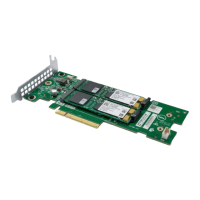Table 32. System Security details (continued)
Option Description
Password Status Locks the system password. This option is set to Unlocked by default.
Table 33. TPM 1.2 security information
Option Description
TPM Security
NOTE: The TPM menu is available only when the TPM module is installed.
Enables you to control the reporting mode of the TPM. The TPM Security option is set to Off by default. You
can only modify the TPM Status, and TPM Activation if the TPM Status field is set to either On with Pre-boot
Measurements or On without Pre-boot Measurements.
When TPM 1.2 is installed, the TPM Security option is set to Off, On with Pre-boot Measurements, or On
without Pre-boot Measurements.
When TPM 2.0 is installed, the TPM Security option is set to On or Off. This option is set to Off by default.
TPM Information Changes the operational state of the TPM. This option is set to No Change by default.
TPM Firmware Indicates the firmware version of the TPM.
TPM Status Specifies the TPM status.
TPM Command Controls the Trusted Platform Module (TPM). When set to None, no command is sent to the TPM. When set to
Activate, the TPM is enabled and activated. When set to Deactivate, the TPM is disabled and deactivated.
When set to Clear, all the contents of the TPM are cleared. This option is set to None by default.
Table 34. TPM 2.0 security information
Option Description
TPM Information Changes the operational state of the TPM. This option is set to No Change by default.
TPM Firmware Indicates the firmware version of the TPM.
TPM Hierarcy Enables, disables, or clears the storage and endorsement hierarchies. When set to Enabled, the storage and
endorsement hierarchies can be used.
When set to Disabled, the storage and endorsement hierarchies cannot be used.
When set to Clear, the storage and endorsement hierarchies are cleared of any values, and then reset to
Enabled.
TPM Advanced
Settings
Specifies TPM Advanced Settings details.
Table 35. System Security details
Option Description
Power Button Enables or disables the power button on the front of the system. This option is set to Enabled
by default.
AC Power Recovery Sets how the system behaves after AC power is restored to the system. This option is set to
Last by default.
AC Power Recovery Delay Sets the time delay for the system to power on after AC power is restored to the system. This
option is set to Immediate by default.
User Defined Delay (60 s to 600 s) Sets the User Defined Delay option when the User Defined option for AC Power Recovery
Delay is selected.
UEFI Variable Access Provides varying degrees of securing UEFI variables. When set to Standard (the default), UEFI
variables are accessible in the operating system per the UEFI specification. When set to
Controlled, selected UEFI variables are protected in the environment and new UEFI boot
entries are forced to be at the end of the current boot order.
Pre-operating system management applications 45

